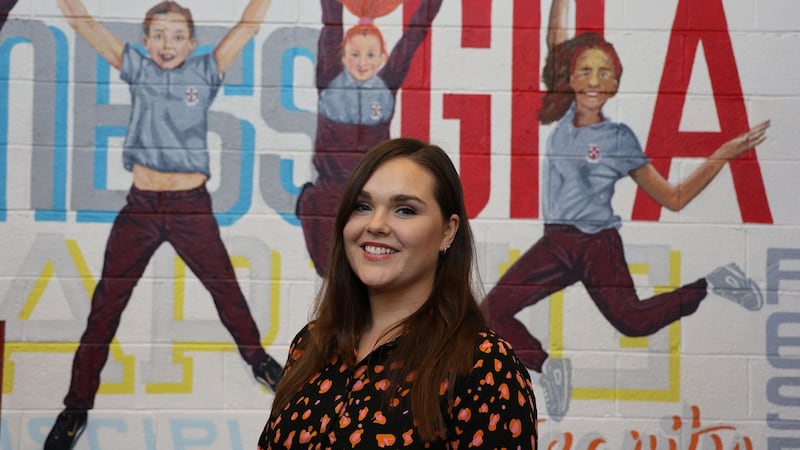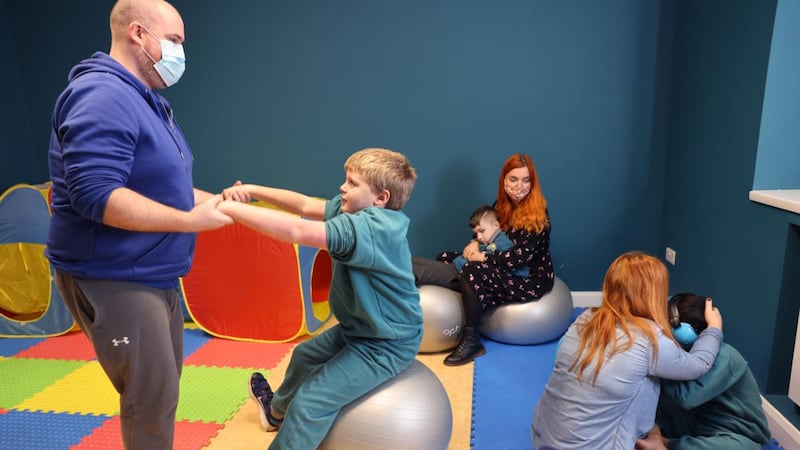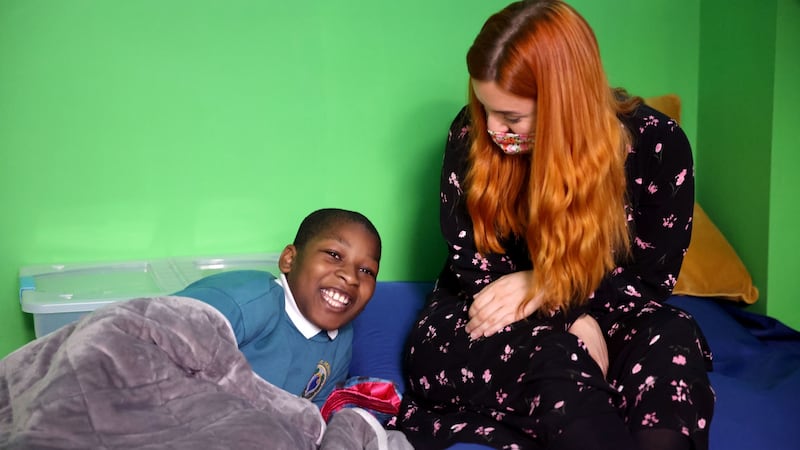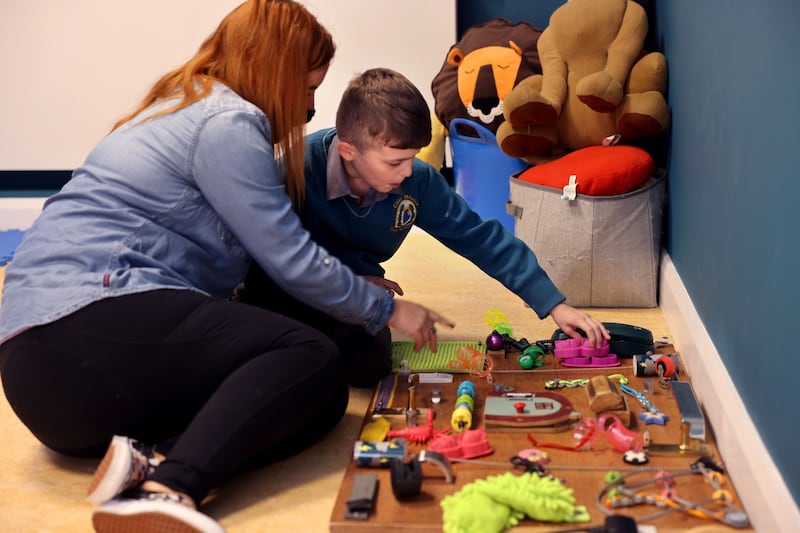It’s one of the biggest changes in Irish education in recent years: the rapid growth in special classes at mainstream schools.
There are 2,118 special classes across schools, a 400 per cent increase since 2011. They provide education for a record 12,700 pupils with autism, learning disabilities and other additional needs.
If anything, this dizzying pace looks set to continue: Minister of State for special education Josepha Madigan recently confirmed that a further 1,700 places for pupils would be created in almost 300 new special classes next year alone.
Setting up a special class, however, can be daunting for schools navigating unfamiliar teaching territory.
Principals, teachers and boards of management face a host of unanswered questions: who decides what children are enrolled in a special class? Where is training available? How should a special class be laid out? What kind of expectations should schools have for pupils?
We’ve spoken to teachers who recently established special classes to gather their first-hand experiences on the key challenges and opportunities involved.
Training
Shauna Leonard recently set up an autism class for the first time at St Aidan's Senior National School in Tallaght.
During the summer she completed courses on special education and autism. The course content was helpful, and Leonard found the discussion forums particularly useful.

“A lot of people on the course were in a similar boat to me,” says Leonard. “People were sharing their own experience of mainstream settings and the special school setting. It was a little bit overwhelming because there was so much, but it was really good.”
Leonard also completed training provided by the National Council for Special Education (NCSE), during the second week of September.
Marie Byrne, a primary school teacher and autism consultant who has worked with the NCSE for many years, says setting up an autism class for the first time is very different to mainstream teaching.
You can't really be confident unless you feel prepared, and you don't really feel prepared before you start
“We are not necessarily trained to do that when we come out of college,” says Byrne. “So, I would advise teachers to recognise that some serious upskilling will be required.”
The NCSE provides valuable training to support teachers working in autism classes, but you have to be in a special class to avail of much of it.
Jason Kelly is in his second year of teaching an autism class in Cnoc Mhuire Senior School, Killinarden, Dublin.
He feels the NCSE training is essential for any teacher starting out, but believes it should be delivered sooner.
“You are only entitled to an introductory autism course after you have opened up a class,” says Kelly. “So, from the teacher’s point of view, you have opened up the class and now they are going to tell you how you should have done it.”

Kelly also says many parents believe that teachers are trained in advance. He visited the children enrolling in his class in their previous school and familiarised himself with their routine while he awaited training.
Kelly also sought out a summer course to prepare him while he waited on the NCSE training. “I was happy I had that before I started,” he says. “You can’t really be confident unless you feel prepared, and you don’t really feel prepared before you start.”
School visits
Outside of training, Leonard found visiting other schools to be really useful.
“I went with my friend over the summer and she showed me her class and that gave me an idea [of what was involved],” says Leonard. She also visited other classes in September, which offered guidance on activities and resources. “Talking to SNAs has been great too,” says Leonard.
Kelly also suggests visiting other autism classes if you are unsure about taking up a position teaching in one.
“Go and visit other classes before you agree to do it. Don’t become an autism class teacher unless you are reasonably certain it is something you think you might like,” says Kelly.
“Those kids need all of you, and you need to be prepared to give it.”

Classroom layout
The second children arrive in a class they need to see some familiar things that comfort them, areas they can go to and a schedule that they can understand and operate, says Kelly.
A number of the teachers that go into this role are newly qualified teachers who are finding their feet... and now they find themselves in a new role leading a team of people
"The Middletown Centre for Autism's website has nice materials around structure and the environment," adds Byrne.
Schools receive funding to help set up the classes, but it is limited.
“You have to prioritise what you are going to do,” says Kelly.“We decided as a team that we were going to get high-quality furniture.
“They are sturdy and purpose-built but they are quite expensive, so your budget tends to crumble very quickly.” Kelly also prioritised setting up the sensory and activity rooms, and they hope to fund-raise for other areas.
Teacher and SNA relationships
The working relationship between teacher and SNA in an autism class can be very different to that of a mainstream class.
“ I would describe it more as a partnership. The line between teacher and SNA is somewhat blurred in an autism class,” says Kelly. “Obviously the planning and teaching responsibility is still primarily with myself, but the SNAs know the routine.”
Kelly says that the care and teaching responsibilities are very much shared. “It has to go like that or else the system just won’t work,” he says.
Byrne says the teacher’s role in an autism class often involves aspects of leadership. “A number of the teachers that go into this role are newly qualified teachers who are finding their feet as a teacher, and now they find themselves in a new role leading a team of people,” says Byrne. “There is a lot asked of the teacher.”
She says the principal sets the tone for the model of leadership in the school.
“For a new teacher starting out, or if they are unsure about anything in that regard, I would advise them to go to the principal for advice.”
Ask for help
The NCSE assigns advisers to schools to offer advice and assistance where required.
“I can apply for one to come in and they will give me advice on how to set up the class better, lay out activities and how to work with specific children,” says Leonard. “They are experienced and knowledgeable.”
Byrne also recommends finding support from teachers in your area.
“It is worth checking if your education centre has a community of practice for teachers working in autism classes,” says Byrne. “If they don’t, then maybe start one. You don’t have to be an expert to draw people around you.”
Get to know the children, because if you don't have that relationship, they are not going to work
Reading reports from speech and language and occupational therapists can be daunting, so teachers should seek help here, too. They can begin by talking to the special education teachers in the school.
“Ring the specialist who wrote the report,” says Byrne. “They are very busy but they are often more than happy to help if you ask.”

Parents know best
Kelly says that, although advisers and specialists can offer advice, communication with parents is key.
“There is a lot of communication with the parents, and I think it is important to get that started,” says Kelly. “They often know the key to whatever solution you are trying to come up with.”
Success looks different
The goals and pace of learning look different in an autism class, and understanding this is beneficial to all.
“Success at the end of term one is happy, calm, relaxed children who are ready for learning, with a happy, calm, relaxed staff who are ready to teach them,” says Byrne.
Leonard has found that the foundations of the classroom are built on her relationship with the children and urges teachers not to focus on the paperwork. “Don’t be too hard on yourself because it really takes time. Get to know the children, because if you don’t have that relationship, they are not going to work,”says Leonard. “Don’t stress about the paperwork – for the first few weeks it is the relationship that is key.”











